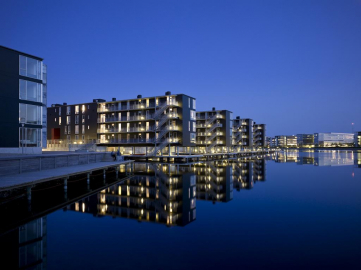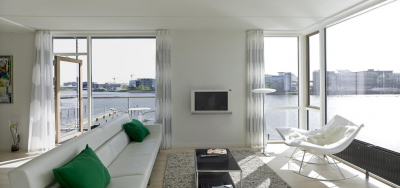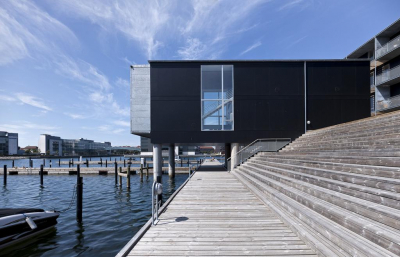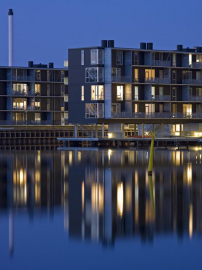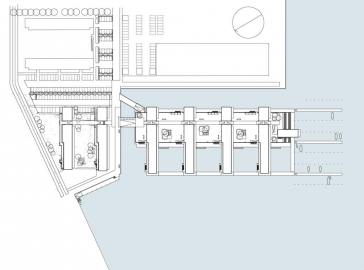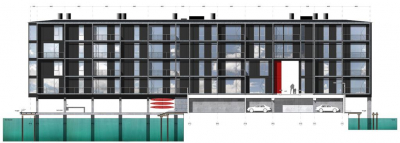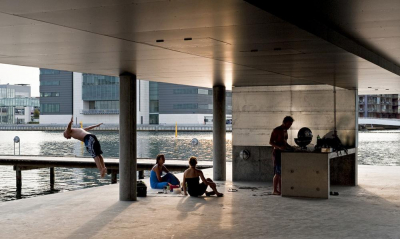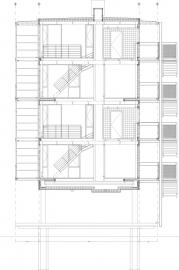Teglvaerkshavnen Housing
the project consists of 120 flats, half of them social housing and half of them private, and a communal house placed out in the copenhagen harbour. the context is characterized by large scale structures and a windblown openness, into which the project introduces a smaller scale and ordered spaces.
it is result of a 2003 competition which had an unusual brief, partly in the 50/50 social housing-private ownership mix but not least in the fact that the copenhagen habour authorities had donated an area of water for the competition as they wanted a model project to boost development of this part of the habour.
the idea was that the money saved from not having to buy land could instead pay for a large landfill that would accommodate buildings and cars. our proposal was to forget the landfill and to build an artificial island in the form of a one-story parking house to get rid of the cars that plague the spaces between our houses and to get closer to the water.
the sea-view has become an obsession in real estate but maybe looking at the sea is the least interesting and certainly the most passive way to enjoy living near water. our claim was that the spaces between our houses and the wooden decks around the parking island would encourage swimming, fishing, kayaking - and the great thing was that when the first residents moved in this spring, we saw people fishing from their balconies, swimming, even partying on a floating platform...
building on the water was a challenge, but once the island was established, the plan helped organize things: the floor of the parking house was dimensioned for a single, large tower crane on tracks and the houses were built one by one as the crane moved from one end of the island to the other.
the buildings are quite narrow and all flats receive daylight from two or three sides. windows span from floor to ceiling and are for the most part placed next to partition walls to reflect the at times limited nordic light into the rooms - and to make the most of the light reflected off the water.
the general structure is prefabricated concrete, but because of the difficult site elements like balconies, stairs and fully fitted bathrooms were also prefabricated and simply lifted into place.
insulation is to high scandinavian standards. a careful balance between solar gain from windows from autumn to winter and shading to counter overheating during spring and summer was achieved with the articulation of the south facade and calculated by the engineers.

